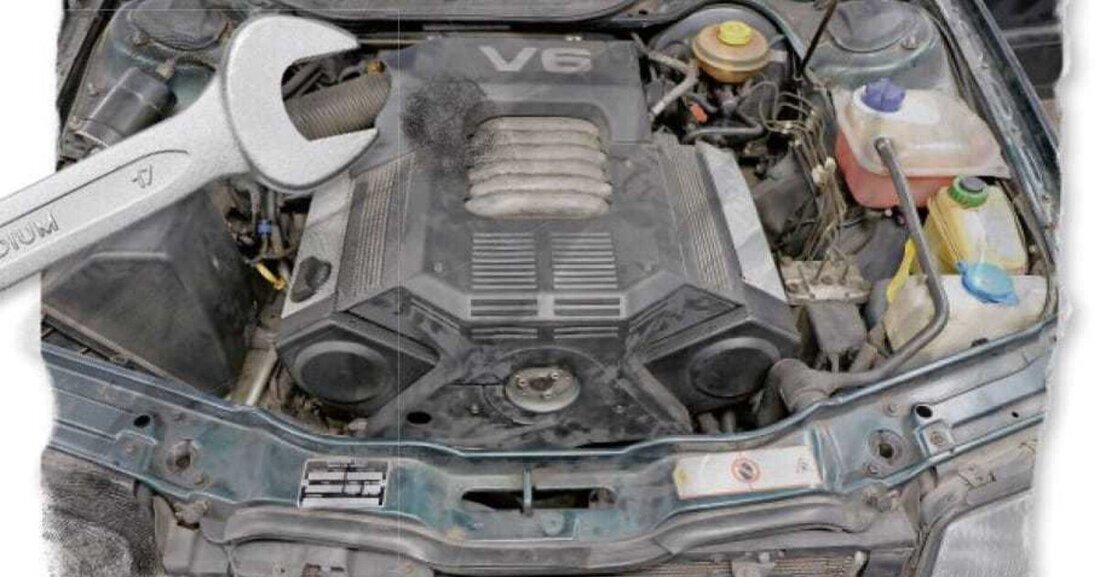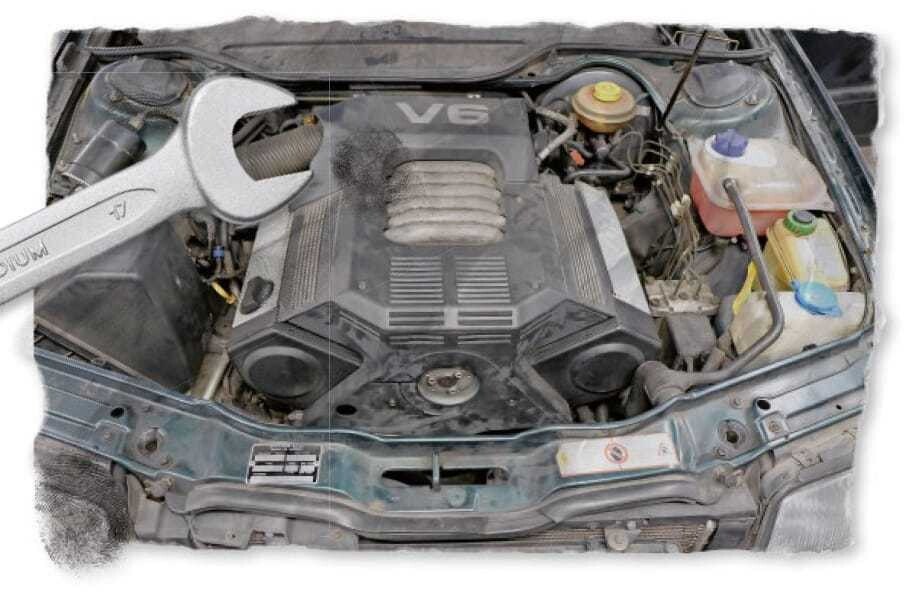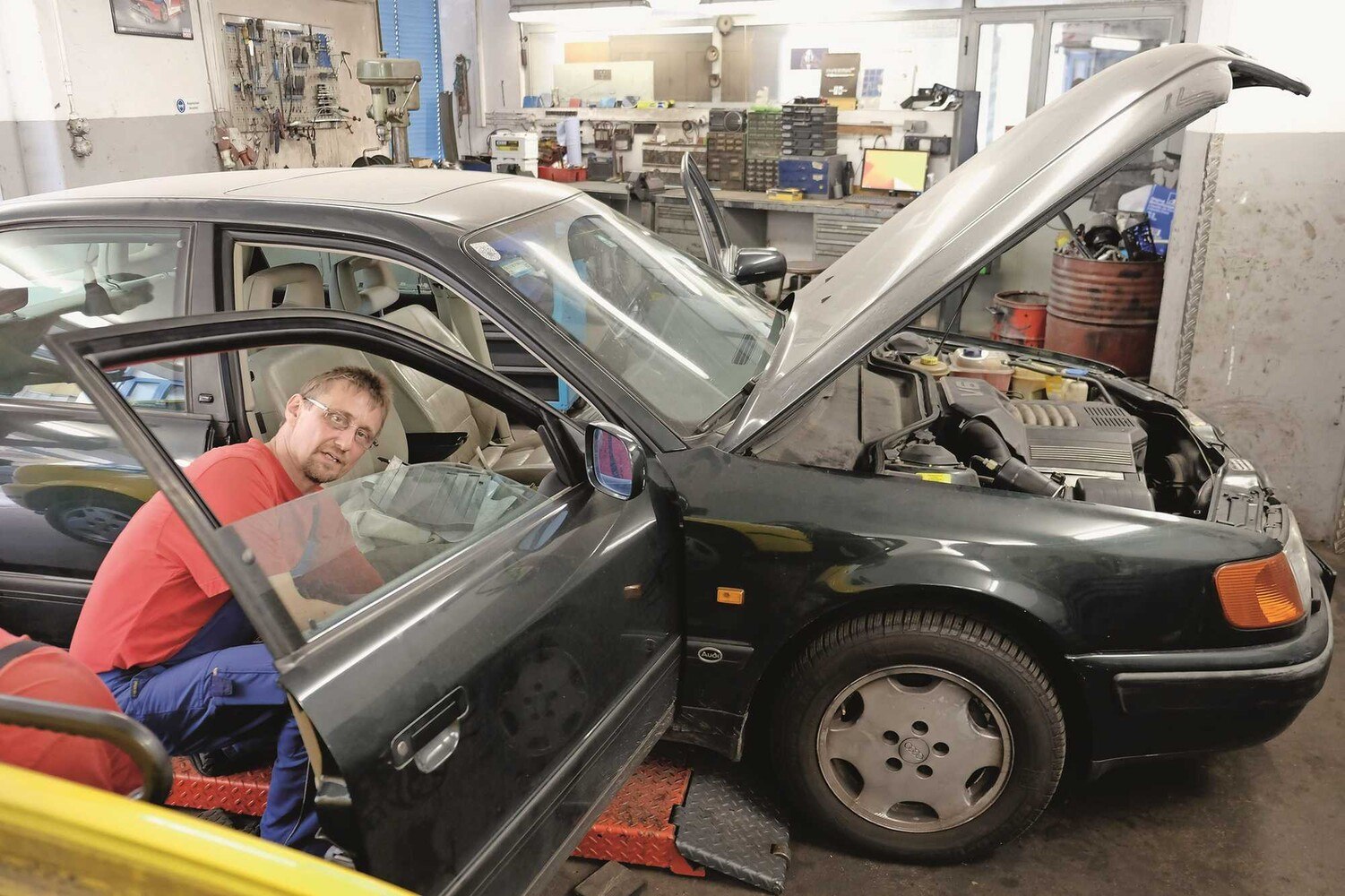Audi 100: Search for the electrical defect
A 22-year-old AUDI 100 is a loyal companion to its owner for almost 200,000 kilometers until it suddenly stops working while driving. In Georg Ringseis' workshop, the error was only discovered after extensive detective work.

Audi 100: Search for the electrical defect


A beautiful example of the last Audi 100 generation, which was renamed A6 after a facelift in the summer of 1994, ends up one day in Georg Ringseis' workshop in Vienna-Landstrasse. The owner bought the car 22 years ago and has rarely driven it as he often travels abroad without a car.
The fully galvanized body of the model, which is considered to be very reliable, shows hardly any signs of rust, the chassis is in good condition, and the interior does not appear to be worn out at all. The 2.8-liter V-6-cylinder gasoline engine produces 174 hp and, from today's perspective, drives the sedan, which weighs around 1.6 tons and has a torque of 245 Nm at 3,000 rpm, rather comfortably.
When the faithful companion choked one day and switched off the engine while driving, his owner first suspected the subsequently installed anti-theft lock, which had often caused problems before. He takes the car to his regular workshop, where a new diagnostic crime mystery begins.
TROUBLESHOOTING IN DETAIL
▶ Georg Ringseis first examines the suspected theft lock, which releases the power supply to the starter and the fuel pump relay via a chip that is plugged into the center console. Conclusion: The immobilizer releases the line, but the starter still doesn't turn.
▶ When bridging the immobilizer, a second error occurs: The fuel pump relay only works occasionally.
▶ Now the relay is replaced and the engine is started. However, after five minutes of problem-free engine running, it dies again. However, measurements show that the fuel pump and relay are activated and work.
▶ After consultation with the customer, the immobilizer will now be finally deactivated and removed. Unfortunately without success, the engine doesn't run smoothly and dies again.
▶ Now the electrical cables for the fuel supply are checked using the circuit diagram. Result: When you turn the ignition key, the voltage collapses.
▶ The power supply to the fuel pump relay and engine control unit is examined for interruptions and oxidation - without result.
▶ The negative side is then checked – and this is where the culprit is finally caught. Because when the engine control unit is under load, the voltage collapses on the negative side.
▶ The problem is finally solved with a new power cable directly from the engine control unit to a ground point on the body. All systems work perfectly – case solved.
“A defective ground wire messes up the electronics.”GEORG RINGSEIS, AUTOMOBILE TECHNICIAN
PETER SEIPEL EARTH STRIPS WITHOUT SENSE OR PURPOSE
A break or corrosion damage to theGround linecan really mess up the vehicle electrical system and therefore also the highly sensitive electronics. If the electricity cannot flow away well, it looks for alternative routes - this phenomenon is sometimes the case in older vehiclestaillightsto see if these are inRhythm of the turn signallight up.
By the way, it's interesting in this context that they used to be so widespreadground strip, which dangled from the floor of the vehicle to the street, have gone completely out of fashion. Apparently it has become clear that they do not help against the electrostatic charge on the body or against the nausea that some passengers experience while driving, as some dubious representatives of the accessories industry made drivers believe at the time.

 Suche
Suche
 Mein Konto
Mein Konto